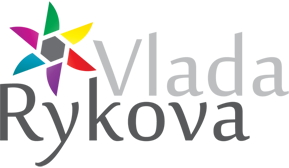HR аналитика: как настроить и использовать
- 1 Введение в HR аналитику и ее роль в управлении персоналом
- 2 Значение сбора и анализа данных для принятия обоснованных решений
- 3 Определение ключевых показателей эффективности (KPI) для HR процессов
- 4 Сбор и хранение данных о персонале: лучшие практики и инструменты
- 5 Методы анализа данных для определения тенденций и проблем в HR сфере
- 6 Визуализация данных: создание наглядных отчетов и дашбордов
- 7 Интерпретация данных: использование аналитики для принятия решений
- 8 Оптимизация процессов найма и подбора персонала с помощью аналитики
- 9 Развитие и обучение персонала: идентификация потребностей и эффективность программ
- 10 Удержание и мотивация сотрудников: анализ уровня удовлетворенности и предложение улучшений
Введение в HR аналитику и ее роль в управлении персоналом
HR аналитика – это мощный инструмент, который играет ключевую роль в управлении персоналом в современных организациях. Она представляет собой процесс сбора, анализа и интерпретации данных о сотрудниках с целью принятия обоснованных и стратегических решений. HR аналитика помогает компаниям более глубоко понять свой персонал, оптимизировать HR-процессы и создать благоприятные условия для развития и роста сотрудников. Этот инструмент обеспечивает HR-отдел и руководство компании фактической информацией о производительности, удовлетворенности, найме и других HR-показателях, что помогает сделать осмысленные решения, основанные на данных, и сфокусироваться на стратегической поддержке развития персонала.
Значение сбора и анализа данных для принятия обоснованных решений
Сбор и анализ данных в HR сфере играют решающую роль в принятии обоснованных решений. Они предоставляют HR-специалистам ценную информацию о производительности, удовлетворенности сотрудников, эффективности обучения и других ключевых аспектах управления персоналом. Важным элементом этого процесса является использование различных метрик для измерения результатов и оценки производительности. Определенная метрика позволяет количественно оценить конкретный показатель. С их помощью HR-отдел может выявить успешные HR-практики и идентифицировать области, требующие улучшения.
Определение ключевых показателей эффективности (KPI) для HR процессов
Для оценки эффективности HR-процессов необходимо определить ключевые показатели эффективности (KPI), которые будут отражать достижение поставленных целей. Ключевые показатели могут быть разнообразными и зависят от конкретных задач HR-отдела и стратегии компании. Например, KPI могут включать такие показатели, как время заполнения вакансий, ретеншн сотрудников, уровень удовлетворенности персонала, обучаемость и другие параметры, которые будут связаны с бизнес-показателями компании. Правильно выбранные KPI позволяют измерить эффективность HR-процессов и выявить места для улучшения.
Сбор и хранение данных о персонале: лучшие практики и инструменты
Для успешной работы с HR аналитикой важно правильно организовать сбор и хранение данных о персонале. Автоматизация процесса сбора данных, которая поможет уменьшить риск ошибок и повысить точность информации является одной из лучших практик. Также следует обеспечить надежное хранение данных в соответствии с требованиями по защите персональной информации. Для удобства анализа данных можно использовать специализированные аналитические инструменты, которые помогают визуализировать информацию, выявлять тенденции и осуществлять более глубокий анализ.
Инструменты для сбора и хранения данных о персонале
Существует множество инструментов, которые помогают собирать и хранить данные о персонале. Вот несколько примеров:
- BambooHR: это система управления человеческими ресурсами, которая помогает автоматизировать многие процессы HR, включая сбор и хранение данных о персонале. BambooHR предлагает функции для отслеживания отпусков, найма, производительности и многого другого.
- Workday: это облачная платформа для финансового и человеческого ресурсного менеджмента, которая предлагает инструменты для планирования, анализа и выполнения важных задач HR.
- Zoho People: это система управления человеческими ресурсами, которая предлагает инструменты для управления и анализа данных о персонале, предлагает функции для управления отпусками, отслеживания времени, производительности и многого другого.
- SAP SuccessFactors: это облачное решение для управления человеческими ресурсами, которое помогает автоматизировать процессы HR и управлять данными о персонале, предлагает функции для управления талантами, обучения, производительности, найма и многого другого.
- Oracle HCM Cloud: это облачное решение для управления человеческими ресурсами предлагает инструменты для управления талантами, социальные сети, аналитику и многое другое.
- ADP: Это комплексное решение для управления человеческими ресурсами, включая зарплату, налоги, страхование, найм, обучение и развитие.
Методы анализа данных для определения тенденций и проблем в HR сфере
Предиктивный анализ данных является одним из ключевых этапов HR аналитики. Методы анализа данных позволяют выявить тенденции и закономерности, скрытые в большом объеме информации. Статистические методы, такие как корреляционный анализ и регрессионный анализ, позволяют определить взаимосвязи между различными переменными. Кластерный анализ помогает группировать сотрудников по определенным характеристикам и выявлять общие тенденции в поведении персонала. Такой анализ позволяет своевременно выявить проблемы и риски в HR сфере и разрабатывать меры по их предотвращению.
Визуализация данных: создание наглядных отчетов и дашбордов
Одним из важных этапов HR аналитики является визуализация данных. Создание наглядных отчетов и дашбордов позволяет представить информацию в удобной и понятной форме. Графики, диаграммы и инфографика помогают визуально представить сложную информацию и выделить ключевые аспекты. Дашборды, объединяющие различные HR-показатели, позволяют наблюдать за состоянием и эффективностью HR процессов в режиме реального времени. Наглядные отчеты и дашборды делают HR аналитику более понятной и доступной, что позволяет легче принимать решения и выстраивать стратегию управления персоналом.
Интерпретация данных: использование аналитики для принятия решений
Интерпретация данных – это ключевой этап HR аналитики, так как именно на этом этапе делаются выводы и принимаются решения. Чтобы правильно интерпретировать данные, необходимо учитывать, как постановлена задача и использовать различные методы анализа. Компетентное понимание данных позволяет выявить успешные практики, выяснить причины проблем и принять меры для улучшения HR-процессов. Важно также учитывать особенности организации и специфику бизнеса, чтобы сделанные решения наилучшим образом соответствовали потребностям компании.
Оптимизация процессов найма и подбора персонала с помощью аналитики
Анализ данных о процессе найма позволяет выявить эффективные методы привлечения талантов и определить источники наиболее качественных кандидатов. HR-аналитика также помогает выявлять слабые места в процессе подбора персонала и разрабатывать меры для их устранения. Анализ успешных наймов позволяет создать профиль идеального кандидата для каждой должности и сделать процесс подбора более эффективным и результативным.
Развитие и обучение персонала: идентификация потребностей и эффективность программ
HR аналитика помогает выявить потребности в развитии и обучении персонала. Анализ данных о компетенциях и профессиональном росте сотрудников позволяет определить области, в которых необходимо развивать навыки и знания. Идентификация потребностей в обучении помогает разрабатывать индивидуальные программы для сотрудников и обеспечивать их профессиональный рост. Также HR аналитика позволяет оценить эффективность обучающих программ и выявить те, которые приносят наибольшую пользу для компании и персонала.
Удержание и мотивация сотрудников: анализ уровня удовлетворенности и предложение улучшений
Анализ данных об уровне удовлетворенности персонала позволяет выявить факторы, влияющие на удовлетворенность сотрудников, и определить причины текучести кадров. Определение проблемных областей позволяет разрабатывать меры по улучшению условий работы и мотивации персонала. HR аналитика также помогает оценить эффективность мероприятий по мотивации и предложить улучшения, которые позволят удержать наиболее ценных сотрудников и повысить их производительность и уровень удовлетворенности.
Заключение
HR аналитика предоставляет компаниям возможность улучшить управление персоналом, принимая обоснованные и стратегические решения на основе данных. Сбор, анализ и интерпретация данных позволяют выявить тенденции, проблемы и потребности в HR сфере, а визуализация информации делает аналитику более понятной и доступной. Правильное использование HR аналитики позволяет оптимизировать HR процессы, улучшить производительность персонала и повысить уровень удовлетворенности сотрудников. Этот мощный инструмент становится необходимостью для современных организаций, стремящихся успешно управлять персоналом и достигать выдающихся результатов в своей деятельности.
Эксперт в области интернет-маркетинга. Руководитель маркетингового агентства MAVR.
Бизнес-степень «Мастер делового администрирования» (MBA).



